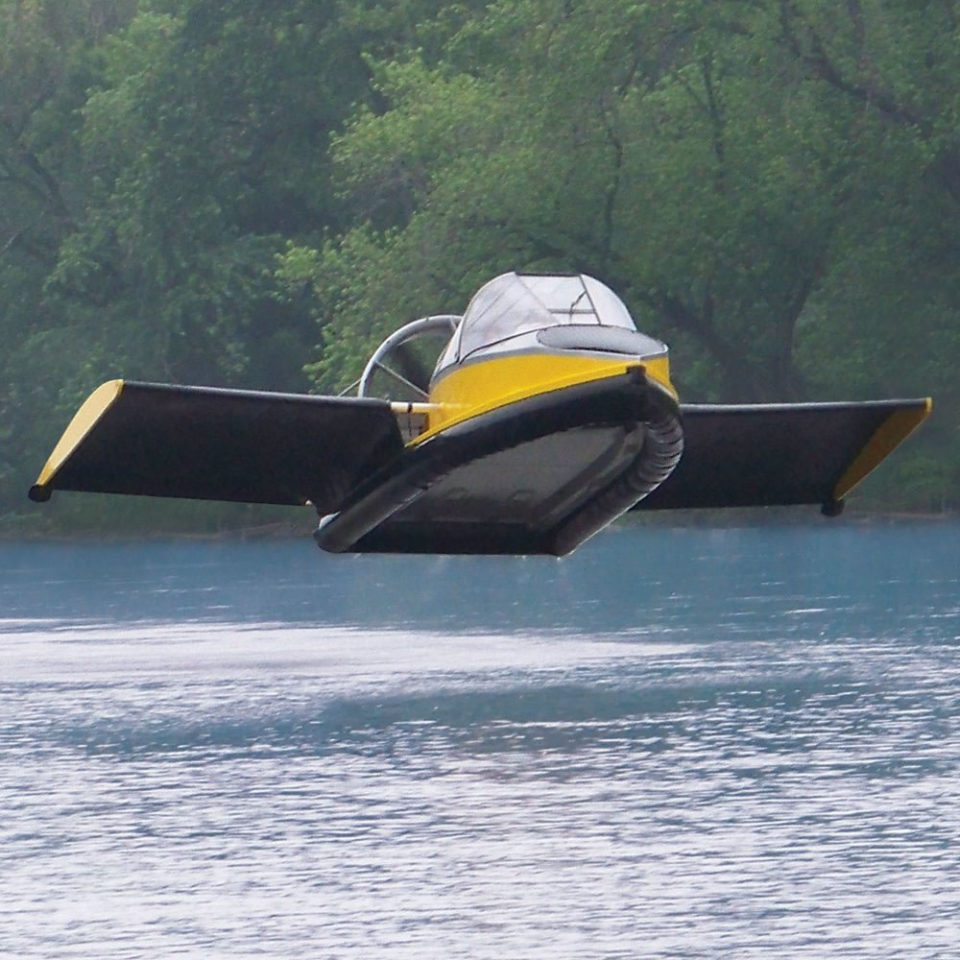You no longer need to be the Avatar in order to be the absolute master of land, air and water – you can achieve this safely and scientifically with the aid of the flying hovercraft. Able to work in winds up to 25 mph and waves up to 6′ when in flight (at a maximum speed of 70 mph), the hovercraft has two nine-gallon gasoline tanks that can take you as far as 160 miles.
The Flying Hovercraft, an ingenious hybrid of air and water travel, promises to redefine how we perceive mobility in the 21st century. Combining cutting-edge technology with practical versatility, this futuristic vehicle blurs the lines between traditional hovercrafts and airplanes, sparking excitement across industries and enthusiasts alike.
Engineering Marvel: The Technology Behind the Flying Hovercraft
At the heart of the Flying Hovercraft’s success is its innovative engineering. By incorporating advanced materials and propulsion systems, it balances the complex demands of both hovercraft and flight functionality.
How It Works
The Flying Hovercraft operates on a dual mechanism:
- Hovering Mechanism: A skirt of pressurized air lifts the craft, reducing friction and allowing it to glide over flat or semi-rough surfaces.
- Flight Dynamics: Equipped with lightweight wings and a robust engine, the vehicle uses thrust to achieve low-altitude flight, particularly over water or open land.
To support these mechanisms, engineers have employed lightweight composites, ensuring the craft remains durable yet nimble. Its aerodynamic design minimizes drag, allowing for efficient fuel consumption even at high speeds. Moreover, the hovercraft’s pilot controls are highly intuitive, blending traditional flight controls with hovercraft navigation, making it accessible even for non-aviation experts.
Even though it’s an awesome super-boat, it’s still a boat; this means it requires registration as such.
If you’re interested and have $190,000 lying around, you’re encouraged to call 1-800-227-3528 for details.
Features:
- 130-hp twin-cylinder, liquid-cooled gasoline engine
- 60″ wood/carbon composite thrust propeller
- 1,100-rpm 34″ lift fan
- integrated wings
- horizontal elevator
- Kevlar composite landing skids
- composite fiberglass/PVC hull
- 19′ L x 7’8″ W x 6’6″. (1,100 lbs.)
